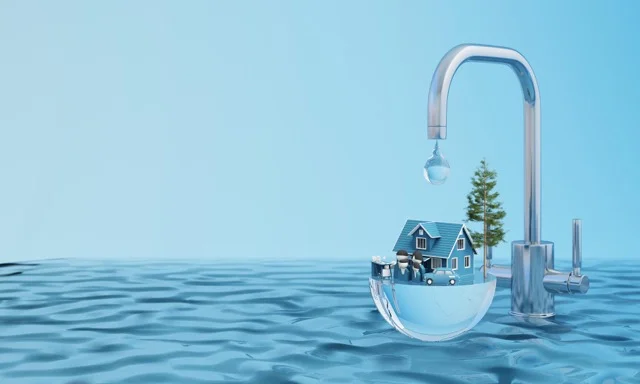Facts About Reclaim Waste Uncovered
Table of ContentsThe Reclaim Waste Statements8 Easy Facts About Reclaim Waste ShownLittle Known Facts About Reclaim Waste.All about Reclaim WasteWhat Does Reclaim Waste Mean?
Residential sewage waste refers to the waste and products from a household septic tank. The proper monitoring and disposal of residential sewage waste need fluid waste to be moved to a sewage treatment plant where the appropriate techniques and devices are applied to purify and dispose of waste.
Commercial waste commonly includes prospective hazards, such as combustible products or a mixture of fluid and solid waste products, and calls for an extra advanced and detailed disposal procedure. The disposal of business waste normally entails the purification of waste before transportation to guarantee risk-free and proper disposal. Hazardous waste is created from byproducts and overflow of commercial processes and production.
This type of waste can not utilize the very same sewer monitoring transport or procedures as septic or industrial liquids. The industrial waste management process calls for the examination and testing of liquid waste prior to it undergoes the disposal process (liquid waste removal). Drainage waste is the liquid waste that comes from drainage and excess stormwater in very booming areas or cities
Drainage waste can trigger contamination and flooding if not handled properly. Learn more regarding sewer cleansing and waste management. Guaranteeing proper waste management can prevent disasters and reduce environmental damage. Both individuals in residential settings and experts in business or production industries can gain from recognizing the procedures and policies of liquid waste management.
The Best Strategy To Use For Reclaim Waste
Contact PROS Solutions today to learn more about our waste administration and disposal solutions and the appropriate means to look after the liquid waste you create.
(https://writeablog.net/reclaimwaste1/reclaiming-resources-a-comprehensive-guide-to-industrial-wastewater-treatment)This supposed 'wastewater' is not only an important source but, after therapy, will certainly be released to our land, waterways or the sea. Made use of water from bathrooms, showers, baths, cooking area sinks, laundries and commercial processes is understood as wastewater.

water used to cool down machinery or tidy plant and devices). Stormwater, a form of wastewater, is drainage that flows from farming and urban locations such as roofings, parks, yards, roads, paths and gutters into stormwater drains pipes, after rain. Stormwater moves without treatment straight to local creeks or rivers, at some point reaching the ocean.
Indicators on Reclaim Waste You Should Know
In Queensland, most wastewater is treated at sewer therapy plants. Wastewater is delivered from residential or commercial sites through a system of sewers and pump stations, known as sewerage reticulation, to a sewage treatment Learn More plant. City governments build, maintain and run most sewer therapy plants. Operators are accredited under the Environmental Protection Act 1994 to discharge treated wastewater at an appropriate ecological standard right into rivers.
The Division of Natural Resources suggests city governments about managing, operating and preserving sewerage systems and treatment plants. In unsewered locations, city governments might need homeowners to set up private or household sewage treatment systems to deal with domestic wastewater from toilets, kitchen areas, restrooms and washings. The Division of Natural Resources authorizes making use of household systems when they are verified to be efficient.
In some new neighborhoods, therapy of some stormwater to get rid of litter, sand and gravel has begun making use of gross contaminant catches. Wastewater treatment happens in four phases: Removes strong matter.
Wastewater then streams into big containers where solids settle and are gotten rid of as sludge. Grease and scum are skimmed from the surface area. Uses small living microorganisms recognizes as micro-organisms to break down and eliminate continuing to be dissolved wastes and great particles. Micro-organisms and wastes are integrated in the sludge. Removes nitrogen and phosphorus nutrients that can cause algal flowers in our rivers and endanger aquatic life.
The 45-Second Trick For Reclaim Waste
Nutrient removal is not offered in any way sewage treatment plants because it requires costly specialist devices. It is ending up being extra common in Queensland. Clear liquid effluent generated after treatment may still include disease-causing micro-organisms. If this effluent is released into waterways such as rivers or the sea, the micro-organisms will eventually die out.

A lot of wastewater flows into the sewage system. Under the Act, local federal governments carry out authorizations and permits for eco appropriate activities (Periods) involving wastewater releases that may have a regional impact.
About Reclaim Waste
Monitoring offers factual info concerning water quality and can confirm that licence conditions are being fulfilled. The details gotten via monitoring offers the basis for making water top quality decisions.